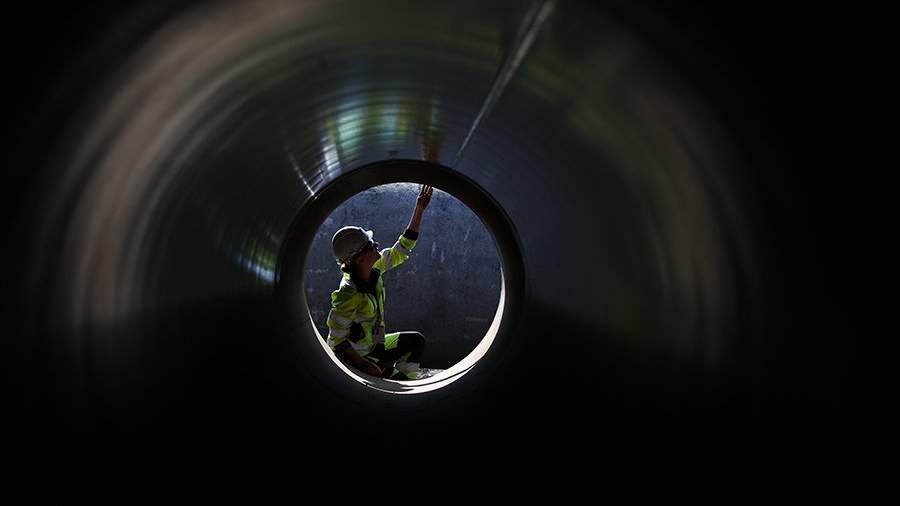
Gas supplies via Turkish Stream reach historical highs
By Rhod Mackenzie
European natural gas futures fell to €31.5/MWh on Friday 19 April 2024, after rising to €33.8. Investors are closely monitoring the situation in the Middle East. Iran does not seem to attach much importance to Israeli retaliatory attacks and the risks of an immediate response have not materialised. Despite this, natural gas prices remain more than 2% higher than the previous week. In addition to the Middle East situation, other factors are also influencing the market. These include increased demand for raw materials in Asia, problems with pipelines in Norway and interruptions in gas transport in the United States.
China's imports reached 6.61 million tons in March. Continued supply cuts from Norway and maintenance work at the Freeport liquefied natural gas terminal in Texas have reduced fuel supplies, and work is expected to continue through May.
In this challenging environment, European politicians have demonstrated a degree of optimism. The EU anticipates a surge in LNG exports, which should result in lower prices, according to the European Commission (EC) head, Ursula von der Leyen. This is a positive development and indicates a 50% increase in energy supply. "We are moving from a state of gas shortage to the opposite situation," she said on Thursday at a press conference in Brussels at the end of the extraordinary EU summit.
It is likely that we are talking about American LNG. However, as RBC calculated, based on data from the European Network of Gas Transmission System Operators (ENTSOG), gas supplies to Europe via the Turkish Stream remain at record levels.
From 1 April to 16 April, Gazprom supplied 543.3 million cubic metres of gas to the European market via Turkish Stream. This is 16.8% less than deliveries in the first two weeks of March, but 3.4% higher than the level of the same period in 2023. Concurrently, the current result for the first two weeks of April represents a new maximum for the same period over the previous four years.
In general, since the beginning of this year, gas supplies via the Turkish Stream, which has been in operation since 2020, have reached historical highs every month. Thus, from January 1 to April 16, total exports reached a record 4.055 billion cubic metres for this period, which is 40.2% more than a year ago. Furthermore, considering supplies via the Ukrainian route, Gazprom has delivered approximately 8.245 billion cubic metres to the EU since the beginning of this year, representing a 27% increase compared to 2023.
The Turkish publication Yeni Safak also provides noteworthy statistics. The latest report from the Gas Exporting Countries Forum reveals that the EU imported a total of 14 billion cubic metres of natural gas through pipelines in March 2024. This represents a 12% increase compared to the previous month and a 4% increase compared to the same month last year.
Furthermore, the volume of fuel sold to the European Union via pipelines in the first quarter of this year increased by 5% compared to the same period last year, reaching 40 billion cubic metres. The amount of natural gas supplied to the EU via pipelines in the first quarter of this year by Russia increased by 23% compared to the first quarter of 2023, exceeding 7 billion cubic metres. 53% of gas supplied from Russia to Europe was transported through Turkey. This provides Europe with a valuable opportunity to prepare for next winter.
As Nikolai Pereslavsky, head of the “Support” department of CMS Group of Companies, points out, the Middle East conflict did not have a significant impact on the price of European gas, and this can be seen from the long-term chart. Regarding the Turkish Stream and record demand in April, the expert notes that demand is supported by economic considerations, with business pragmatism taking precedence over political populism.
It is clear that the EU cannot yet do without Russian gas. The increase in supplies through the Turkish Stream is also due to Ukraine’s statements about the suspension of gas transit through its territory from 2025. While the EU is not interested in this, there are concerns about the potential for closing transit. In this regard, the Europeans are increasing their supply volumes.
According to Ekaterina Krylova, managing expert of the PSB Analytics and Expertise Center, gas prices in Europe have begun to decline again after reaching their peak in January 2024. They currently amount to $330/1000 cubic meters. Mr. Smith believes that there is no fundamental reason for the continued growth in gas prices. He notes that gas reserves in European storage facilities at the end of winter reached a historical record of 61 billion cubic meters, with a fill rate of 58%.
With this level of occupancy in the summer, Europe will still need to replenish them by only about 40 billion cubic metres. Furthermore, Ekaterina Krylova notes that gas demand in Europe in the first quarter of 2024 decreased by 2%, to 113 billion cubic metres. This trend will also contribute to pressure on gas prices. On average for the year, PSB anticipates prices to be between $280 and $300 per 1,000 cubic metres.
